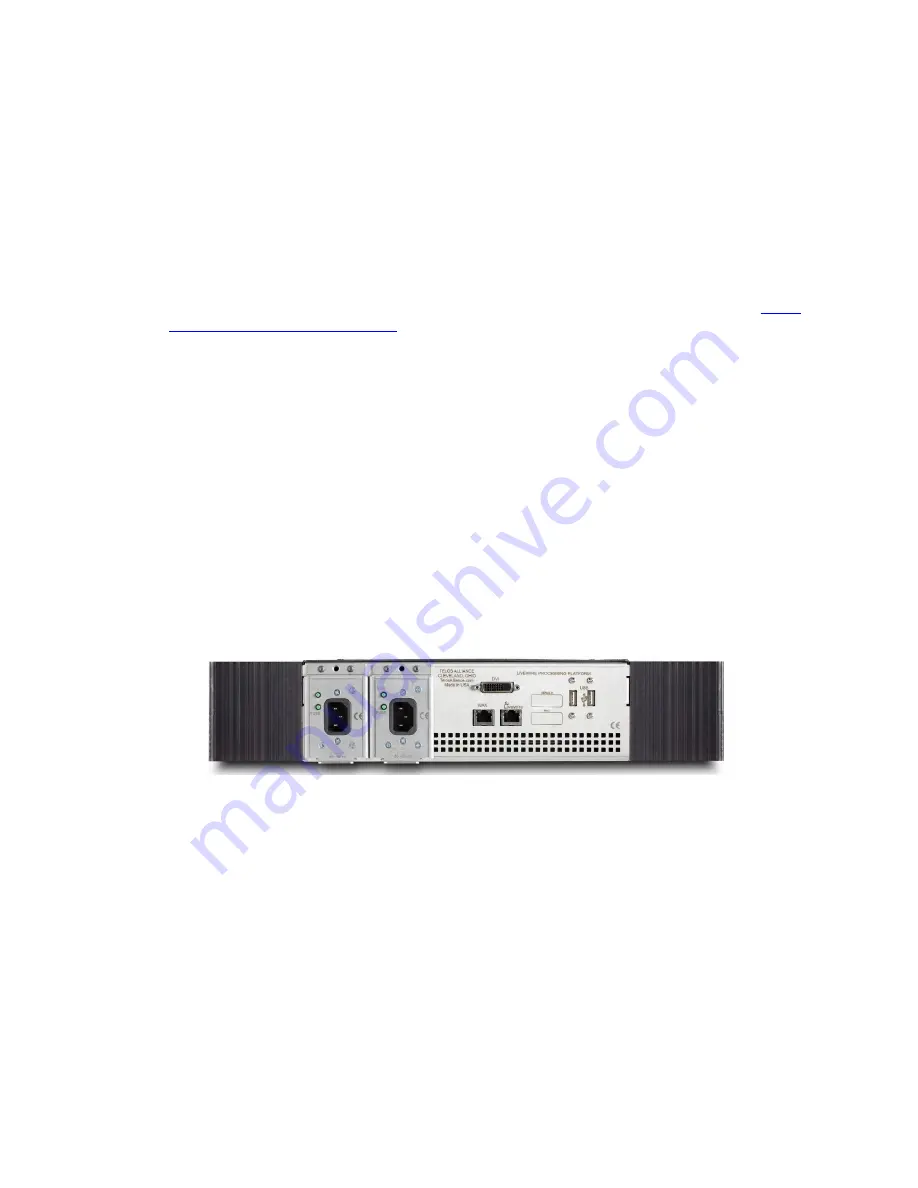
SECTION 1 |
2
INTRODUCTION
Quick Start
Register and Sign Up
We know. You’re anxious to mount your new Zephyr iPort PLUS in the rack and get it running. But first, please take
a moment to register your product online. Registration activates the warranty, and is the best way to assure you will
get quality support should you have questions regarding installation, operation, or troubleshooting. Visit
http://
telosalliance.com/product-registration/
to register.
A copy of The Telos Alliance 5-Year Limited Warranty is included at the back of this manual.
While visiting our web site, you may also want to sign up for our Direct Current e-mail, so you’ll receive notification
of new firmware upgrades available for your Zephyr iPort PLUS.
Installation
Zephyr iPort PLUS mounts in a 2 RU high space in a standard 19-inch rack. The unit will operate in any environ-
ment where the stirred air temperature around the unit is between 0 and 40 degrees Celsius (that’s 32 to 104
degrees Fahrenheit) with a relative humidity of 0 to 98 percent (non-condensing).
Power is supplied by fanless, dual-redundant internal auto-ranging power supplies, 90-132 / 187-264 VAC, 50-60
Hz. These supplies are auto-switching and easily field-replaceable for maximum uptime. Power consumption is
100 Watts. Normally, the PWR and FUSE LEDs on each of the power supplies will light up green. They will glow
red if the power supply has failed or the fuse is open.
Connections
The rear panel of Zephyr iPort PLUS is simple, thanks to Livewire AoIP I/O. A single Ethernet cable is all that’s needed
for all inputs, outputs, GPIO, and remote control. Uncompressed 24-bit/48 kHz audio goes in from your network via
Ethernet, and compressed MPEG,
aptX® Enhanced
(optional), or linear PCM streams go out on the same cable – no
need for converters and connectors. Alternately, you can use the separate WAN connection to send your audio over an
outside network.
For both Ethernet jacks, the Ethernet mode is set permanently to AUTO, so the other end must be, as well. (Problems
can result if the other end is set to
a fixed 10, 100, or 1000BT
.)
Usually, these jacks are connected to an Ethernet switch or an IP router.
A
PC is connected to
the same logical
network
to support the Web control interface. An Ethernet cross-cable can be used for a temporary direct connection to
a PC, allowing configuration.
CAT-5e cables may be used for the Livewire connection, though we recommend CAT-6 when possible. The 100/1000
connection may be CAT-5e if used with a 100BT port at the other end, but must be CAT-6 when the other end is
1000BT (gigabyte).
You’ll also notice that there are two USB ports and a video out connector (labeled DVI). These are available for
upcoming features that can be added with firmware upgrades. Also, you may be asked by a tech support engineer to
plug in a keyboard and monitor if there are issues with the unit’s L
inux
operating system.












































